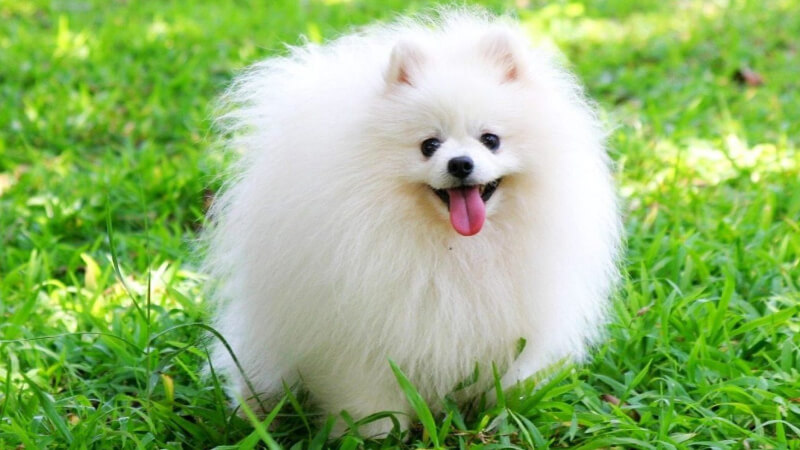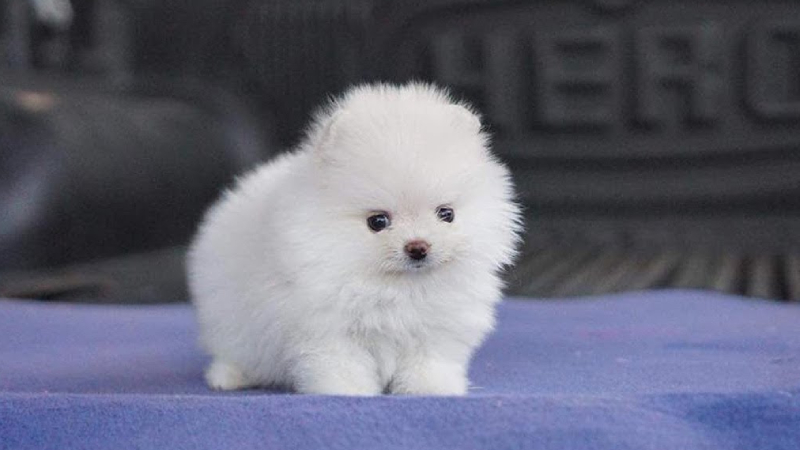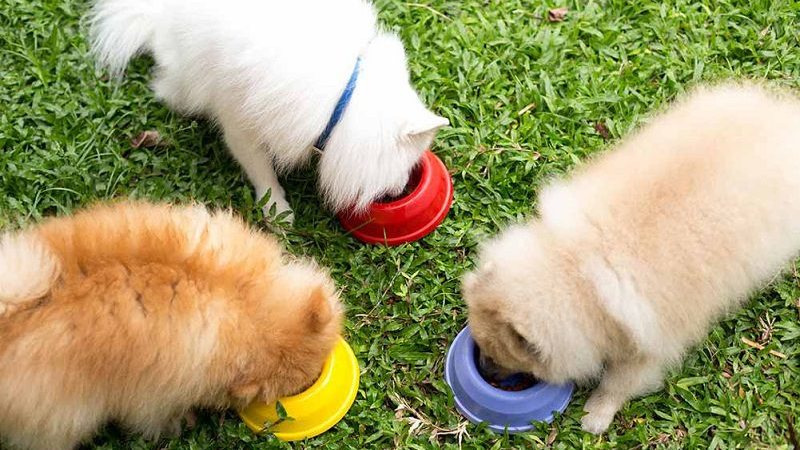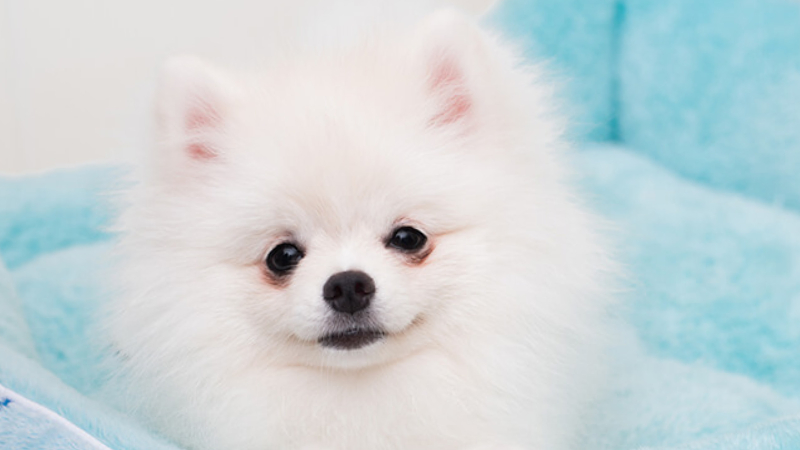Pomeranian or Spitz dogs are a beloved breed in Vietnam and worldwide due to their adorable tiny stature. Let’s delve deeper into this charming breed through this informative article.
1. All About the Pomeranian
Origin of the Pomeranian
Pomeranians originated from the German Spitz breed, emerging around the 19th century. According to historical records, the border region between Poland and Germany is considered their homeland. In 1900, the AKC – American Kennel Club officially recognized the Pomeranian as a purebred dog.

In the ranking of the world’s most intelligent dog breeds, Pomeranians are placed at an impressive 5th position due to their remarkable memory skills.
Physical Characteristics of the Pomeranian
Pomeranians are a small breed, with an average height ranging from 15-25 cm and a weight of approximately 2-4 kg. They possess a compact body, petite legs, and a low-set stature. These proportions are often considered the hallmark of their cuteness, making the Teacup variety a favorite among dog enthusiasts.

Pomeranians boast a double coat, similar to the Alaskan Malamute, Samoyed, and Husky. Their long, thick, and silky fur is typically found in colors such as white, gray, or golden.

Their heads are roundish, with a fox-like face, a long and slender muzzle, large eyes, and an alert expression. Their ears are small and triangular, always pricked up, contributing to their excellent hearing ability. Their tails are truly remarkable, with a long, fluffy plume that curves gracefully over their backs.
Personality Traits of the Pomeranian
Pomeranians are known for their cheerful, energetic, and playful personalities. Despite their small size, they enjoy physical activities and running. They are also quite independent and capable of entertaining themselves when left alone.

They thrive on closeness and affection from their owners and particularly enjoy playing with children due to their playful nature. Therefore, it is essential to allocate time for cuddling and petting to fulfill their need for attention.
Being small dogs, they may occasionally exhibit stubbornness or even a hint of arrogance. Additionally, they can be surprisingly bold when it comes to confronting larger dogs. Hence, proper training is necessary to prevent them from picking fights with bigger canines and risking injury.
For further insights:
2. Caring for Your Pomeranian
Feeding
Pomeranians are somewhat picky eaters, so their meals should be nutritious, delicious, and varied to prevent boredom.

Their favorite foods include meat, offal, fish, and balut (duck embryo). These provide ample protein, fat, and other essential nutrients. It is recommended to include a small portion of rice and vegetables in their diet to ensure sufficient fiber, vitamins, and minerals for a healthy digestive system.
However, avoid feeding them excessive fatty foods as it may lead to digestive issues. Always provide fresh water and limit their intake of dairy products, as their digestive system may struggle with large amounts of milk, potentially causing stomach upsets. Ideally, offer them two meals per day to suit their small size and prevent overfeeding.
Living Conditions

Pomeranians adapt well to small living spaces. However, they are sensitive to high temperatures, so it is crucial to provide them with a cool and comfortable environment during hot weather, either by finding a shaded area or allowing them access to air conditioning.
Grooming

With their thick and double-layered coat, Pomeranians require daily brushing and regular trimming to maintain a healthy and tangle-free coat, especially during the warmer months.
Provide them with a soft bed or a suitably sized crate to ensure their comfort. Additionally, remember to deworm them every six months to prevent stomach upsets and intestinal issues. Regularly clean their noses to maintain respiratory health.
When taking them out for walks, avoid excessive exercise and instead, opt for moderate activities like light jogging or leisurely walks to conserve their energy while still providing them with enjoyment and stimulation.
Common Health Issues
Pomeranians are prone to eye conditions such as cataracts, tracheal collapse, hypothyroidism, patellar luxation, and hypoglycemia. Stay vigilant and provide proper care to prevent or manage these health concerns effectively.
3. Buying a Pomeranian
How to Choose a Pomeranian
When selecting a Pomeranian puppy, opt for one that is at least eight weeks old.
Look for a pup with a healthy weight, neither too thin nor obese. A swollen belly coupled with a skinny frame could indicate the presence of worms, so be cautious.
Choose a puppy with a strong chest, sturdy and straight legs, and a lively demeanor.
Examine their eyes and nose; the eyes should be clear and bright, while the nose should be moist but not runny.
Check the gum color, which should be a healthy pink. Ensure the coat is shiny and free-flowing, with no signs of ear discharge or inflammation.
Observe their overall behavior; they should be energetic and display a normal gait. Don’t forget to ask for health records and vaccination certificates before bringing your new furry friend home.
Price Range of Pomeranians

The market offers a wide range of prices for Pomeranians. Factors such as physical attributes and gender influence their cost. Here’s a general price guide:
Pomeranians born in Vietnam without VKA (Vietnam Kennel Association) papers: 7-9 million VND
Pomeranians born in Vietnam with VKA papers: 12-15 million VND
Pomeranians from Thailand with VKA papers: 10-20 million VND
100% purebred Pomeranians from Europe or America: over 40 million VND
Points to Consider When Buying a Pomeranian
Physical Appearance: Depending on your preferences, you can select a Pomeranian with specific characteristics, such as body shape or coat color.
Age: You have the option to choose a puppy or an adult dog. However, keep in mind that puppies require more attention regarding diet, care, and vaccinations, while adult dogs (over two years old) generally have stronger immune systems and are lower maintenance.
Breed: Decide whether you want a purebred or a mixed-breed dog. Purebred dogs tend to be more expensive, often costing three to four times as much as their mixed-breed counterparts.
Paperwork: Ensure the seller provides relevant documentation, including proof of purebred status from recognized canine associations and import papers for dogs sourced from abroad.
In conclusion, we hope this article has equipped you with valuable insights into the Pomeranian breed. We wish you success in finding your adorable Pomeranian companion!
You may also like:














